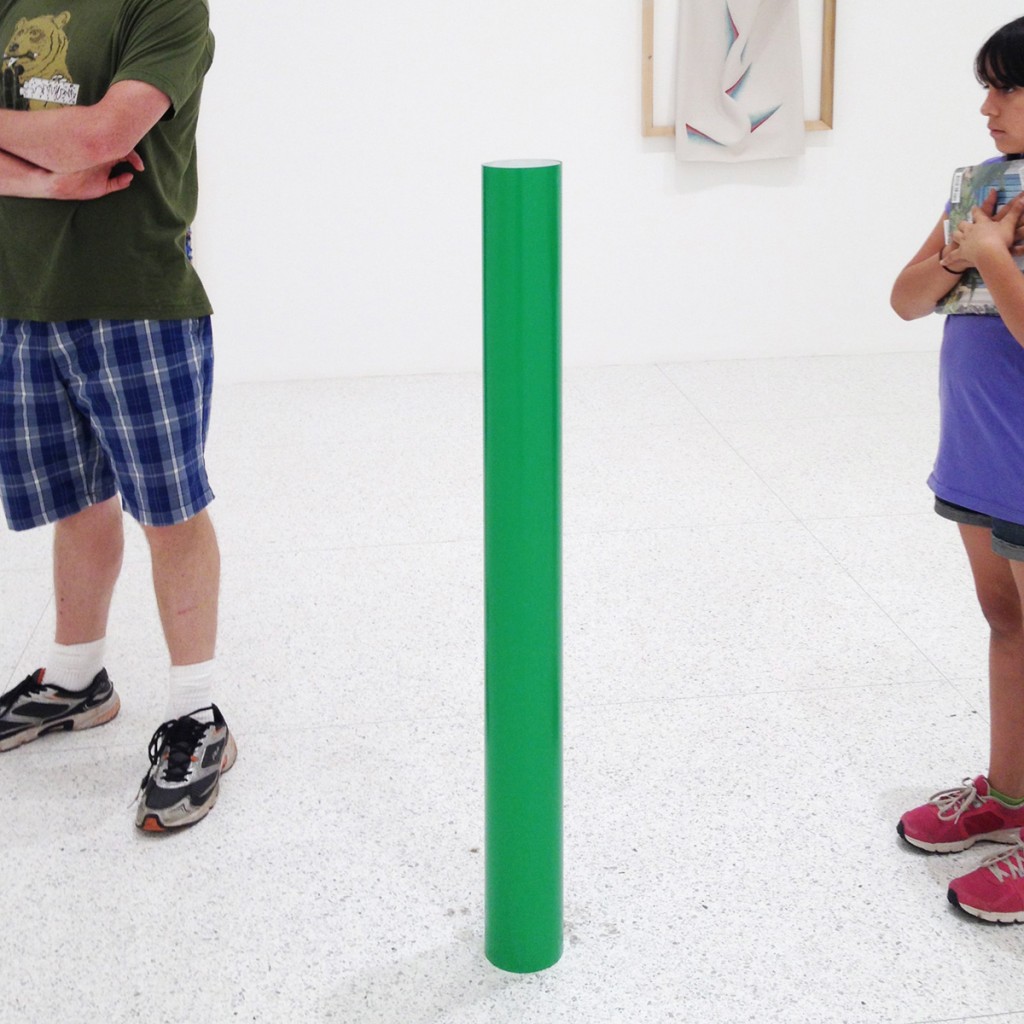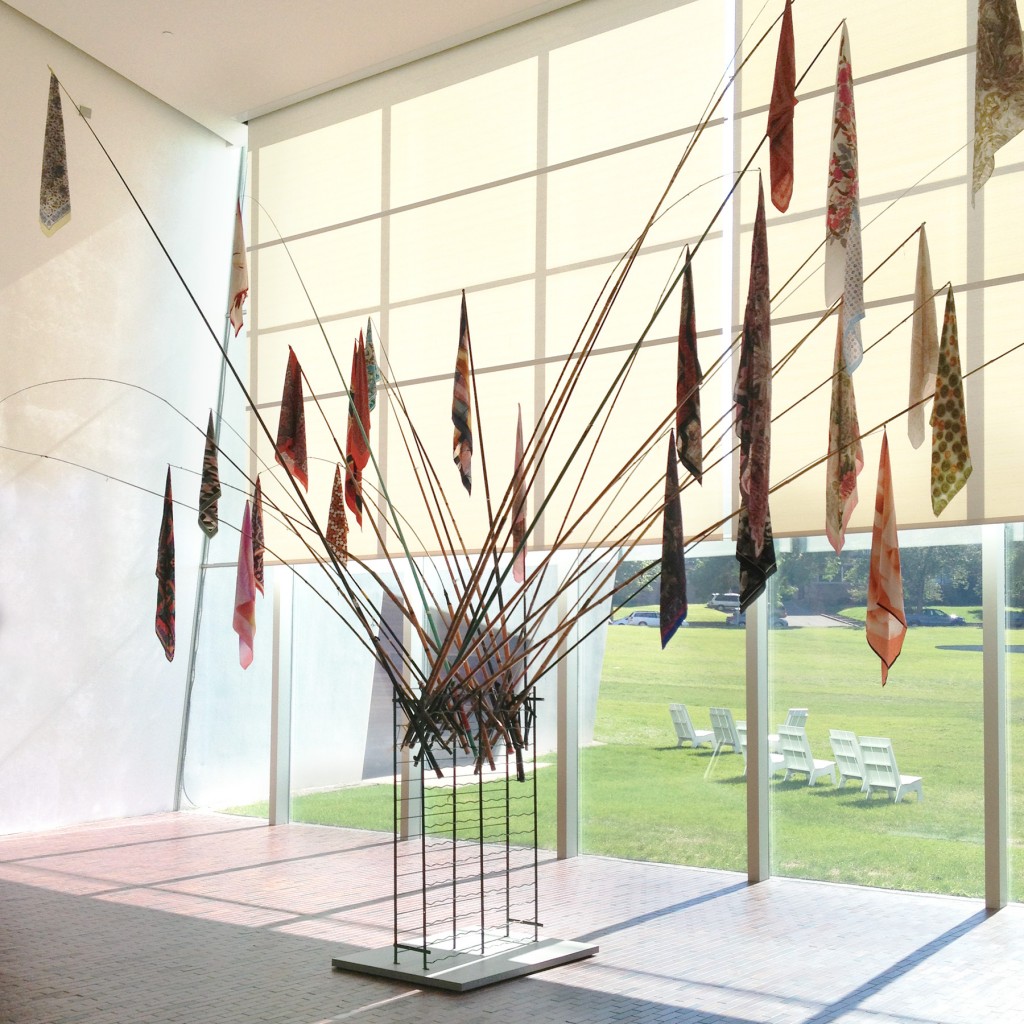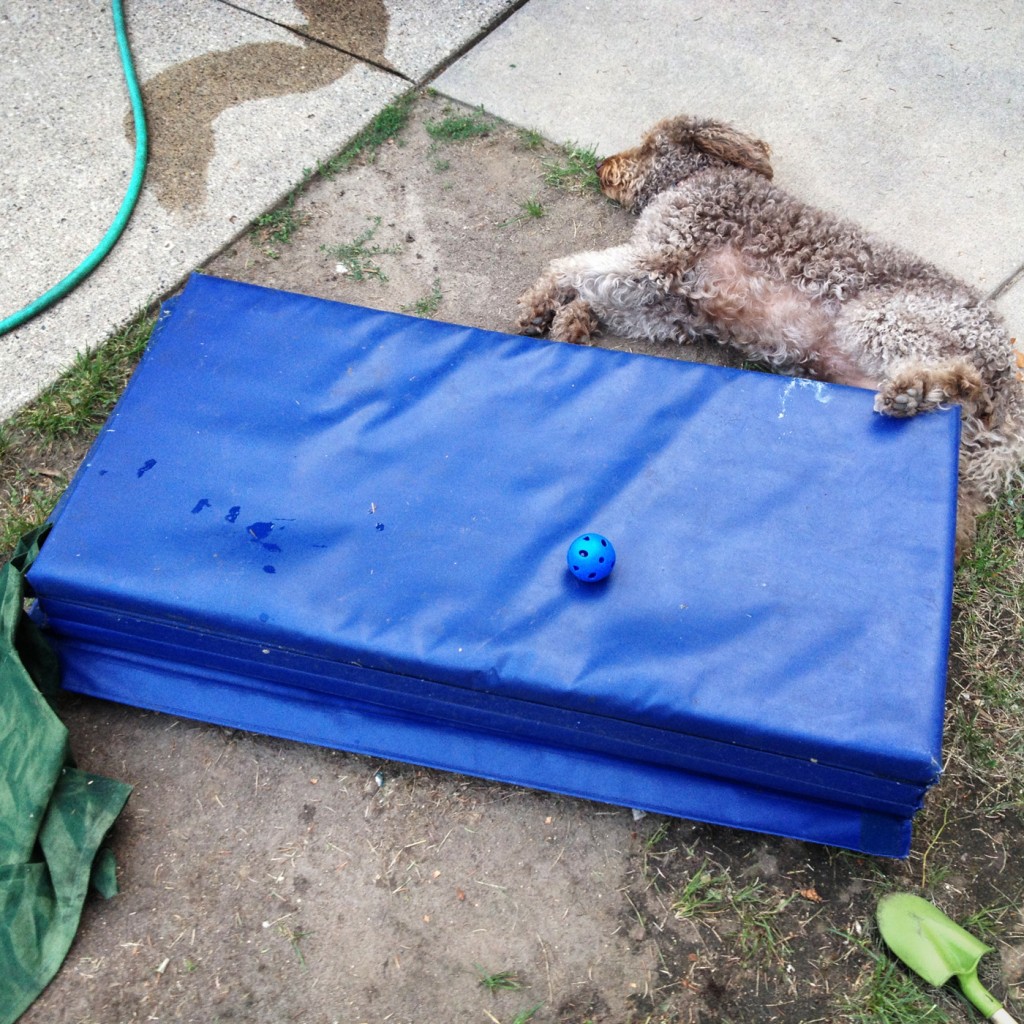This week my daughter and I made an unplanned visit to The Walker Art Center. What’s the point of this? Carmen asked when we came across Sherry Levine’s Black Mirror in the permanent collection. I considered giving a clumsy lecture on Duchamp and Ad Reinhart, but just shrugged my shoulders and moved on.
In an exhibition on contemporary abstract painting, we came across a curled sheet of photographic paper by Matt Connors called Lisp (green). Once again Carmen asked for an explanation. Not knowing anything about Connors, and still not wanting to give the Duchamp for Dummies talk, I just said that art doesn’t need to be fancy, that it can be just about anything, even an idea. She gave me her patented I-see-through-your-grown-up-bullshit look.
Next we visited a mid-career survey exhibition of the Mexican artist Abraham Cruzvillegas. Before she was able to ask me any questions, we both read a statement by Cruzvillegas on the wall:
For the first twenty years of my life I watched the slow construction of the house where my family lived; we all took part in the process. Against the background of a mass invasion of immigrants from the countryside, who needs – like housing – were very specific, the construction of my house, of my colonia (district), began in the 1960s, in an area of volcanic rock (Pedregales de Coyoacán) in the south of Mexico City…
Because it was built with no funding and no architectural plan, today the house looks chaotic, almost unusable, yet every detail, every corner has a reason to be where it is…
Buckminster Fuller said that matter should be organized by sympathy, a concept that I apply to my collections of objects, images, and sounds as well as my three-dimensional wok.
Through minimal transformations, with no explanations or stories and possibly without much skill, my work is the proof that I am alive.
The irony is that this wall placard was a story and as such provided a way into the work for Carmen (and her father). Cool, look at that – she said pointing to a very simple sculpture of scarves hanging off bamboo fishing rods. I’m still not sure if Carmen and I were responding to Cruzvillegas’ aesthetic sympathy or to his story, but as we circled the exhibition for a second time, we were utterly charmed.
To try to get a better grip on Cruzvillegas, I purchased the exhibition catalog, The Autoconstrucción Suites. Designed by Dante Carlos and Emmet Byrne, the book masterfully communicates the spirit of Cruzvillegas’ work. The highlight, for me, was the manifesto-like definitions scattered alphabetically throughout the book. Here are some of my favorites
affirmative: All projects to be made out of nothing, considering them both separately and as a whole, as a challenge for doing things as optimistically as possible, even in the worst situation, standing for something, believing.
blind date: Accepting work, art, reality, as a love affair: it can grow or it can collapse.
communal: Sharing, exchanging, bartering as dynamics in projects: information, experience, knowledge, technique, tools, language, are goods for this. It is a capital beyond money. Exhibitions and projects are generous this way as open fields in which individuals wander, finding peers to be with. Exhibitions are archipelagos of solitudes.
definitely unfinished: My identity. Exhibitions are places where nouns and verbs of sentences to be completed are presented. Artworks are only completed – many different ways, even contradictory – through interpretation. They are completed or transformed by people, curators, other animals, other artworks, context.
emotional: I can’t avoid being in love, sad, or angry, and it makes me cry.
fragmentary: Contradictory elements making a whole; there’s no chance for mistakes. Tales are short moments of experience or imagination. Married pieces from clashing contexts make beautiful conversations. A book of tales makes a universe.
generous: Providing things and/or knowledge to oneself is more generous than promising or pretending to give messages to anybody. I think of projects as shares or bits of my life-term research
happy: I’m pregnant.
inefficient: Well done, badly done, undone. Many times it is better to leave things undone, definitely unfinished.
joyful: Inventing the rules of a game to be played every day in different ways. Rules are dictated from specific needs; then it can be played capriciously, with ingenuity and pleasure. If the game can be played collectively, it could be better, depending on the people you invite and on their will to share, learn, and take risks together.
renewed: Renewing commitment and engagement is crucial to keep works and life fresh. Renovating the contract comes from opening the eyes, ears, and heart. Sometimes it’s necessary to conclude instead of renewing. You then renovate yourself, your practice, vocabulary, language, discourse, work. Destruction is not necessarily the opposite of construction: you can construct a new door by hammering a wall.
warm: A warm system means an organic organization of re-arrangeable elements, in which subjectivity, affection, emotion, but mostly needs, rule. An exhibition or a book can be warm systems.
After reading Cruzvillegas’ warm book and exhibition, I felt renewed. I walked outside and gazed upon the dead patches on our lawn (that none of our neighbors have) and my children’s scattered toys (that every other parent picks up), and for once wasn’t annoyed:
Not long after photographing this autoconstrucción, I decided to set aside my long held hostility toward Instagram and gave it a try. Would it be possible, I wondered, to approach this communal and fragmentary medium with the spirit of generosity as Cruzvillegas describes it (providing things and/or knowledge to oneself as shares or bits of life-term research)?
It’s too early to tell. All I can say is I’m Pregnant!




Nice, very nice indeed!
It’s good to know about that “patented I-see-through-your-grown-up-bullshit look”. Guess several sons and daughthers of artists feel like that every day, but there’s always the chance that they shall finish up feeling and understanding something after a while…
Keep the Instagram and the posts coming please!
Thanks Maria. I don’t think I’ve every enjoyed talking about art more than with my daughter. She should be a columnist on the blog.
I’m pregnant too !!!
Yay. But which kind of pregnant?
A few well written words about a piece of art can go a long way in helping the viewer enter it (Heisenberg be damned).
Really enjoyed the post, looking forward to the Instagrams!
Hi Alec,
The use of text in conjunction with photographs in particular, in the exhibition setting, has been bothering me a little. As artist or story tellers, whichever term you prefer, surely the photographer’s aim is to produce a body of work, and this applies to any other visual medium that communicates, or creates some sort of dialogue between the creator and the viewer. If text is needed to provide an explanation for the work, then surely the work, which is visual and not literary has failed to produce this dialogue.
So my question to you is: if an image or body of work does not convey its message, tell its story, impart knowledge without text, usually full of pretentious art speak (the sort of thing that produces a patented I-see-through-your-grown-up-bullshit look), is it really a successful piece of visual work?
Thanks
Jason
Hi Jason, I think text and context both have a lot to do with how we read work, be it sculpture (as discussed in this post) or photography. I think text or context can help or hurt visual work in equal measure. In the case of The Autoconstrucción Suites, I think the text helped significantly. It was a simple story about the artist’s youth that helped me access the work. I don’t see anything wrong with that. I don’t think there is any law that artwork needs to be exclusively visual – there certainly isn’t for Cruzvillegas who uses sound and video too.
:)))))))))….
of course, one of my heroes:
http://www.francisalys.com/